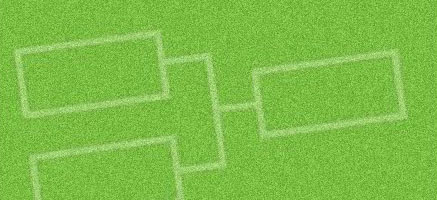Most websites have way too many pages! A website today is not the sum total of everything your tournament is online — a very different way of looking at websites from even a few years ago. The rise of social media is why your tournament website should be smaller.
The website needs to give the who what where when why and be the authoritative voice for the your tournament; also, for operationally critical data (sponsors, applications, schedules. The other media stuff needs to live on the outposts like Facebook, Twitter, Instagram, Periscope, Snapchat etc with the website simply validating the authen- ticity of the content. The outposts are where people live now, wanting your tournament to meld into the rest of their lives, not the other way around.
Your online schedule is a hook for media where you can hang photos, videos, profiles, blog posts, etc. A schedules immediately gives your media context, i.e., who, where, when, why. Use that organic context to your advantage. The absolute hardest part of shifting to social media channels is convincing folks to let go of about 90% of the website pages. You just don’t need them!
Your tournament is now mobile and real time. Your participants, their fans and your supporting commu- nity is not waiting until they get home to look up scores, searching for photos, etc. They are doing that in real time as they experience your event.
Social is mobile
Because social = mobile, you should be staying on the mobile apps as much as possible, even signing up for accounts using them. For some — like Instagram and Snapchat — there is no web site; everything is done through the app.
Social media channels priority
Running a tournament is all about making the best choice for what works for you. While it would be great to be everywhere on every social media channel, it’s probably not possible.
Here is the list of social media channels in the order of priority that I think you should be working. In a year, this list may change but going into the 2016 tournament season, these are it.
- Snapchat
- Periscope
- Vine
- YouTube
- GooglePlus
Our advice: At minimum, the modern tournament should be fluent in the top four channels to be visible. How much you want to work each channel depends on the manpower you can direct into each. Some of the content to these channels can be automated, like scores and news updates.
Important: Implement the social media tools in order and completely. For example, don’t try using Vine or Periscope if you haven’t yet set up a Twitter account. It will frustrate and scatter you.
Don’t get so hung up on the volume of people using specific social media channels. It doesn’t matter if one billion people are using Facebook if only your guest teams and local community are willing to connect to your tournament there.
Focus on building your networks where it makes most sense to you. It is better to do fewer channels more deeply than to be everywhere but anemic and unfocused.
Broadcast and interact like everyone in the world is watching you. If you are doing it well, local print and television will ask if they can use your content. If you are doing it exceptionally well, national media will.
There are also other channels that you can explore like Tumblr, Reddit, YouNow, YikYak, FourSquare, Digg, WeChat, etc. But these eight provide a strong core of social media for your soccer tournament. Keep in mind that each channel requires more time and effort to maintain and you should only start with more if you are committed to keeping up these accounts.
Excerpted from The Game Through Glass: Playing your youth sports tournament on social media
